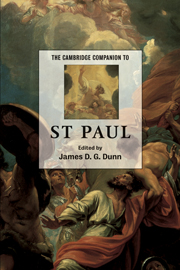12 - Paul’s gospel
from Part III - Paul’s theology
Published online by Cambridge University Press: 28 May 2006
Summary
Paul uses a cluster of related terms to refer to his initial missionary preaching and to the proclamation at the heart of his letters. The nouns 'gospel' (euaggelion), 'word' (logos or rhema), 'preaching' (akoe), 'proclamation' (kerygma), and 'witness' (martyrion) are often used almost synonymously, as are the corresponding verbs.
The most important of these terms is undoubtedly the noun 'gospel', which is used 48 times in the undisputed letters; the verb 'to proclaim good news' is used 19 times. Paul probably inherited the distinctive early Christian use of 'gospel' from those who were followers of Jesus before his own call or conversion. Indeed the noun may well have been used by Greek-speaking Jews in Jerusalem and Antioch very soon after Easter.
The noun ‘gospel’ is rarely used in the Old Testament, and never in a religious context with reference to God’s good news. So early Christian use of this noun must be understood against the backdrop of current usage in the cities in which Christianity first took root. Literary evidence and inscriptions both confirm that the term ‘gospel’ was closely associated with the imperial cult in the cities of the eastern Mediterranean. One particular inscription provides striking evidence.
- Type
- Chapter
- Information
- The Cambridge Companion to St Paul , pp. 173 - 184Publisher: Cambridge University PressPrint publication year: 2003
- 1
- Cited by



